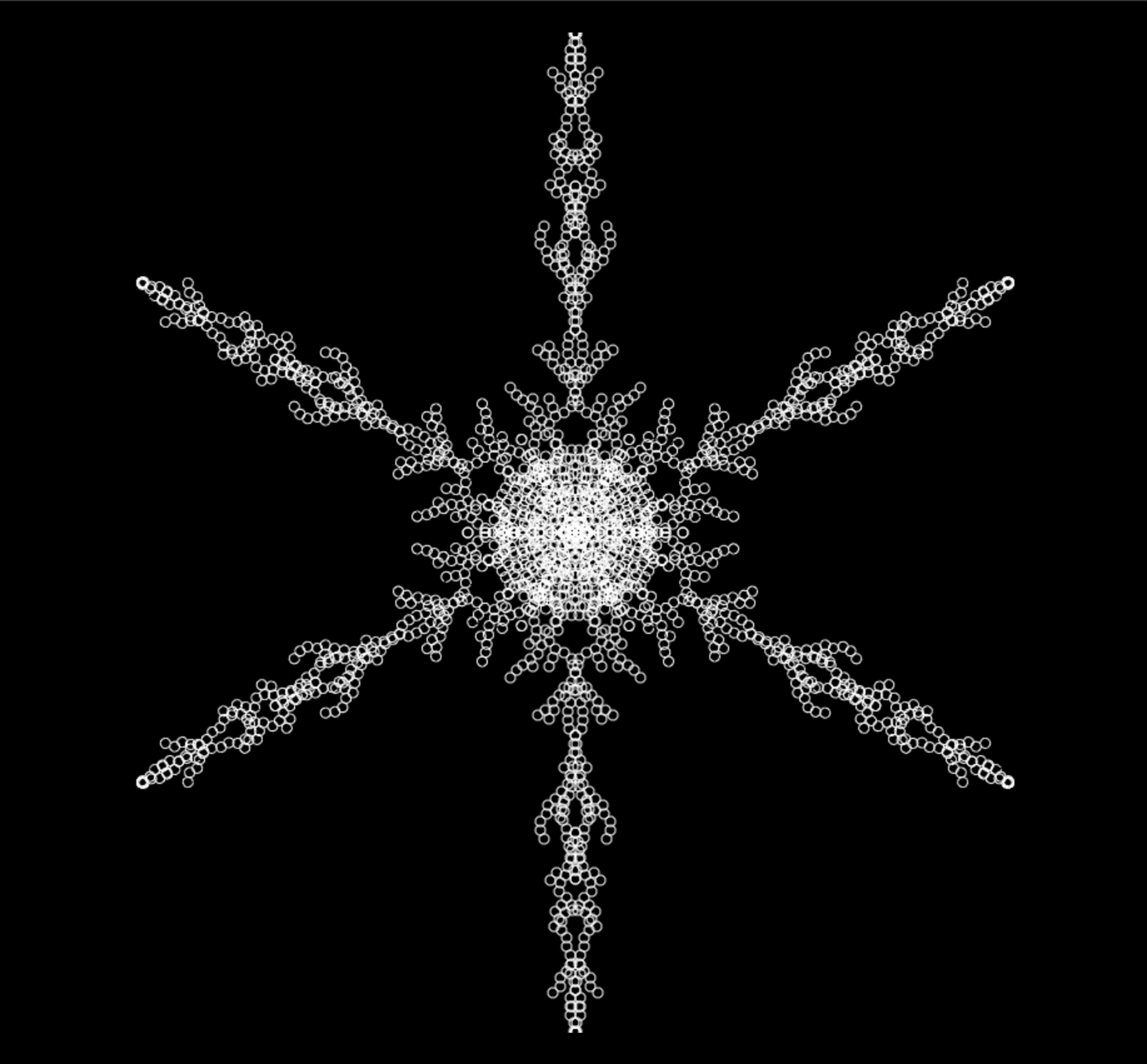Snowflake
We will do this project as a livecoding exercise in the classroom. This project software simulates a biological process called “diffusion limited aggregation” to produce the beautiful and unique snowflakes.
The software uses a design pattern called “random walker” which is a random motion to create a walk but preferentially towards the center of the frame. However, the walk is not a straight path or in equidistant steps. Each clump of molecules (a single circle in the picture) has a mixture of motion in the NEWS directions as it moves inexorably towards the center. When it encounters another clump along the way, it stops moving (sticks to it) - this is where the “diffusion limited aggregation” aspect is realized.
So, now we have a single “spoke” built up in memory in an ArrayList - you can think of this as a dynamic array that can grow in size as needed. All that is left to do is read the ArrayList one circle at a time and show the build-up on the screen as tiny circles. So now you see why the snowflake builds from the inside-out.
As you draw one single spoke on the canvas, rotate() and translate() by 2*PI / 6 (or PI / 3) radians and draw five more. You may also want to mirror each spoke with the scale() commandThen you do it again for the next spoke and the next one and so on.
An additional requirement is for you to add a CFlake class as a child of the Flake class. CFlake class instances will have color. You will need to create a Constructor for CFlake, add the clr property, and initialize it. You should also You should ensure that randomly 50% of all snowflakes have color.
Jingle Jingle - there you have it.
Click here to see the animation expected from your Java program
